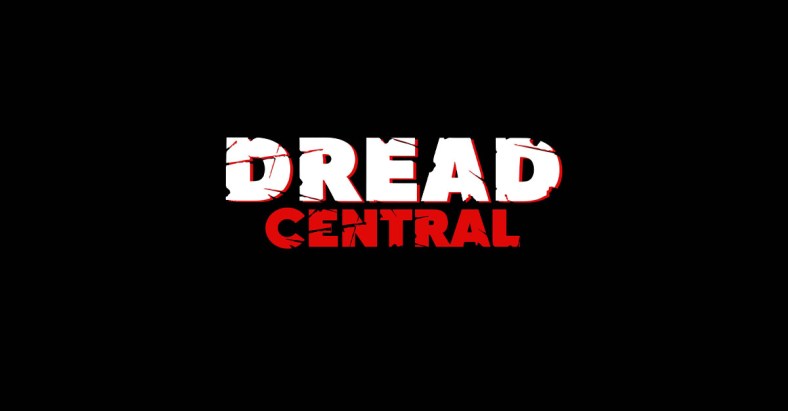The Scottish Highlands Are A LONELY PLACE TO DIE: A Retrospective of 2011’s Survival Horror Starring Melissa George

Calibration is key in survival thrillers. Strain credulity too often and you risk compromising the audiences’ suspension of disbelief. Opt for a more grounded approach and you risk boring the audience with a series of tepid set-pieces that, while realistic, don’t make for particularly visceral on-screen thrills. It’s the distinction between, say, a movie like Sanctum and The Descent. Sanctum, as well-crafted as it is, never ascends beyond the minutiae of cave-diving schematics, a how-to video in place of a thriller. The Descent, meanwhile, augments its already oppressively claustrophobic thrills with otherworldly humanoids, having earned enough audience goodwill in its grounded first act to justify the sudden lurch into monster mash mayhem. A good survival thriller sometimes needs a monster, and as evidenced by 2011’s A Lonely Place to Die, there’s no edict that monsters need to be born of myth and carvings.
A Lonely Place to Die’s set-up is simple. Alison (Melissa George), Ed (Ed Speleers), Rob (Alec Newman), Jenny (Kate Magowan), and Alex (Garry Sweeney) meet at a cabin for a weekend hiking trip in the Scottish Highlands. Ed’s inexperience and overweening attitude are insipid threats compared to the real one they’re posed to face, quite literally a little pebble atop a Brobdingnagian pile of mountainous menace. While on a lunch break, they discover a young girl, Anna (Holly Boyd), buried in a chamber in the woods. They don’t know who she is or why she’s been imprisoned deep within the Highlands. To supplement the already growing tension, Anna speaks Croatian– whatever they hope to learn, they won’t be learning it from her.
Director Julian Gilbey quickly dispenses with the moral chamber-piece, making quick work of the group’s decision to free Anna from the ground and take her to the local authorities. She’s a young girl buried ten feet in the earth in one of the most remote locales on earth, and Gilbey wisely contends that any reasonable person would have scruples about leaving her.
A Lonely Place to Die is the unsung hero of mountainous horror. It fits in nicely with the already robust hiking horror subgenre– see Wrong Turn, Deliverance, or The Ritual– while also climbing to new peaks of its own. The protagonists aren’t simply hiking– they’re scaling cliffs. They’re abseiling down precarious drops and grappling right back up when their pursuers meet them at the bottom. They’re capable, reasoned, well-equipped adults that stand a chance if only, excuse the pun, they were on equal footing with their tormentors.
Those tormentors are a frenzied bunch. Too often, human antagonists are rendered either laughably inept or supernaturally skilled. Sean Harris (always a welcome antagonist) and Stephen McCole are brutal, unyielding, and no less capable of scaling the Scottish cliffs in pursuit of their targets than the central quintet is at evading them. Wits and brawn are equally matched, and it’s thrilling to watch as characters are offed on their way down the mountain, frequently subverting expectations about who typically lives in these kinds of flicks.
Eventually, Alison and Ed are the only two left alive, and if the movie falters anywhere, it’s with the introduction of Darko (Karel Roden), the mobster tasked with securing Anna’s ransom and return home. It bogs the movie down at its peak, substituting survival thrills and sky-high tension for talky negotiations among equally despicable parties. Thematically, A Lonely Place to Die is fueled by the genuine goodness of its characters. They’re not savants or saints, but they made the right decision at the right time. The impact of shifting to Fargo by way of Scotland is distressing, not unlike the whiplash felt by Rob when his rope is cut, and he plummets to his death.
Melissa George’s presence in particular, though– a genre juggernaut in her own right– is enough to set things right. Early vignettes have her capably fleeing through trees and scaling cliffsides, but it’s in the final act that George is permitted to embrace her inner Final Girl. Ed, Anna, and Alison find themselves ostensibly safe in the town of Annan Mor in the midst of the Beltane festival, a Gaelic May Day festival celebrating the halfway point between the spring equinox and summer solstice. The iconography is an early augur of both Kill List and Midsommar, and the festival is more than just Gaelic embellishment. The chaos and costuming of the Beltane augment the tension, hiding predators among prey and making it difficult for the characters to ever really feel safe.
After Ed is killed, Alison and Anna flee to a nearby home. Mr. Mcrae (Stephen McCole) is close behind. He breaks the front door in, murders the homeowners, and squares off with Alison. The fight is thrilling, Alison able to hold her own against Mcrae’s massive physique. As they fight, the house catches fire, concluding in an upstairs bedroom where Alison shoves Mcrae from a window. He is impaled on the iron fence below.
A Lonely Place to Die is an overlooked piece of survival horror cinema. It’s lean, mean, and sufficiently characterized without detracting from its towering genre thrills. Alpine thrillers are often craggy and tepid, constrained by either budget or vision. A Lonely Place to Die is different. A soldering shot of adrenaline, the filmic equivalent of braving the river rapids and skating down the timberline on heels alone. A Lonely Place to Die is currently available to stream through IFC Films Unlimited or rent through iTunes, and I urge anyone who hasn’t seen it to check it out. There’s nothing else quite like it.

Categorized:Editorials News

